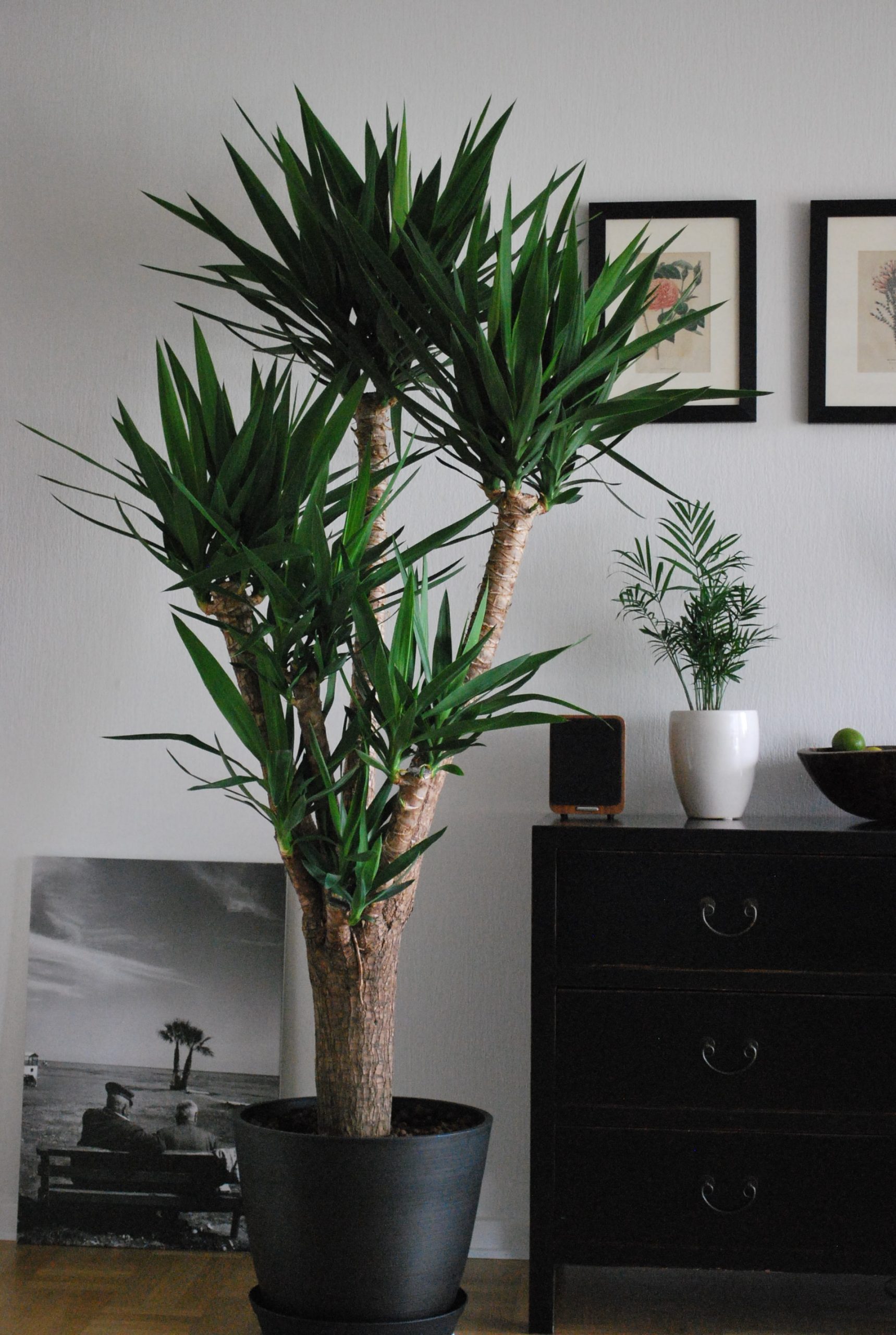Last Updated on April 9, 2024 by Real Men Sow
Yuccas are evergreen trees and shrubs that can be found in hot, dry regions of North and Central America. Many varieties are hardy and can grow outside. However, the more tender ones can be grown indoors. Yucca elephantipes, also known as Yucca guatemalensis and Yucca gigantea, are the most well-known. The spineless yucca or yucca cane are also very popular. The impressive crown of spiky, palm-shaped leaves that adorns the trunk makes it an attractive focal point.
Yucca is an excellent choice for beginners because it is easy to grow, can withstand neglect, and can last a long time. It can tolerate bright sunlight, unlike many house plants. This makes it a great plant to have in a sunny corner. Yuccas are drought-tolerant because they store water at the base. Slow-growing Yuccas can take a while to reach their full potential. The plant may develop offsets as it grows. This gives the plant a multi-stemmed appearance.
How To Grow Yucca
Yuccas thrive in bright sunlight and can withstand some direct sun. Only water the soil’s top few centimeters. Yuccas can also withstand drought.
Where To Grow Yucca
Yuccas can be grown in a very relaxed environment. It is best to grow it in a warm area where the temperature doesn’t drop below 7°C. Yuccas can also withstand direct sunlight.
How To Plant Yucca
Your yucca should be planted in soil-based compost with some horticultural sand and grit for drainage. Every two to three years, repot. To prevent the plant from becoming too heavy or falling over, use a sturdy pot.
Caring For Yucca
It is more likely to damage a yucca if you water it too often than if you water it enough. You should water when the top few cm of the compost has dried. However, don’t worry about it drying completely every now and again – yuccas can withstand drought. Let excess water drain. And then, in Winter, you should be waterless.
From spring through autumn, apply half-strength liquid fertilizer every few months. You won’t have to mist your Yucca plants as they don’t require high humidity. To keep your Yucca leaves clean, wipe them every now and again.
Do you have to repot yucca trees?
Yuccas thrive when they are slightly pot-bound. Repotting is not necessary every year, but it’s fine to do so once or twice a year in spring. Due to its large size, it can be difficult to repot mature yuccas. To do this, use a trowel to remove as much soil as possible and then add fresh compost.
You can trim the trunk to make your plant smaller if it becomes too large. It will be ugly for a time but will soon sprout again. To propagate the plant, you can repot the cut section.
How To Propagate Yucca Trees
The best way to propagate Yucca is by using the offsets (pups), at the base of your trunk. This could be done when the plant is repotted in spring. Use a sharp knife to cut the offset. Let the wound dry for a few days before you plant the new plant in a new container and water well. Keep the plant in a warm place. You can also propagate Yuccas using 20cm stem cuttings in spring in the same way as dracaenas.
Common Issues With Yucca Trees And How To Solve Them
Yellow leaves on lower leaves
They are normal and will fall back naturally and die, giving the plant an almost palm-like appearance. The leaves can be gently pulled or cut away. You have likely over- or under-watered the plant if you see yellow leaves.
Leaf spot
A leaf spot is a form of bacteria or fungi that leaves brown or black marks on the foliage. Treat affected leaves with an organic fungicide and remove any affected ones.
The brown leaf tips
Leaf tips turn brown due to erratic watering. These can be cut off but not into the green growth. Otherwise, they will reappear.
Watering
Excessive watering can cause sagging and droopy foliage.
Too much shade
Not getting enough sunshine for yucca trees can cause pale leaves for yucca trees.
Overwatering
Overwatering yucca trees can cause rotting stems. This is more common in winter. Yuccas don’t like sitting in wet, cold compost so decrease watering. You may not be able to save your plant if the problem has advanced too far.
Mealybugs
Look out for white fluffy blobs that appear on the undersides of leaves. Use a cotton bud or damp cloth to wipe them off. Meat bugs can be difficult to eradicate so make sure you keep checking your leaves.
Scale insects
Small sap-sucking insects measuring approximately 6mm in length. Use a cotton bud, or a cloth soaked in an insecticide containing essential fatty acids to wipe them off.

